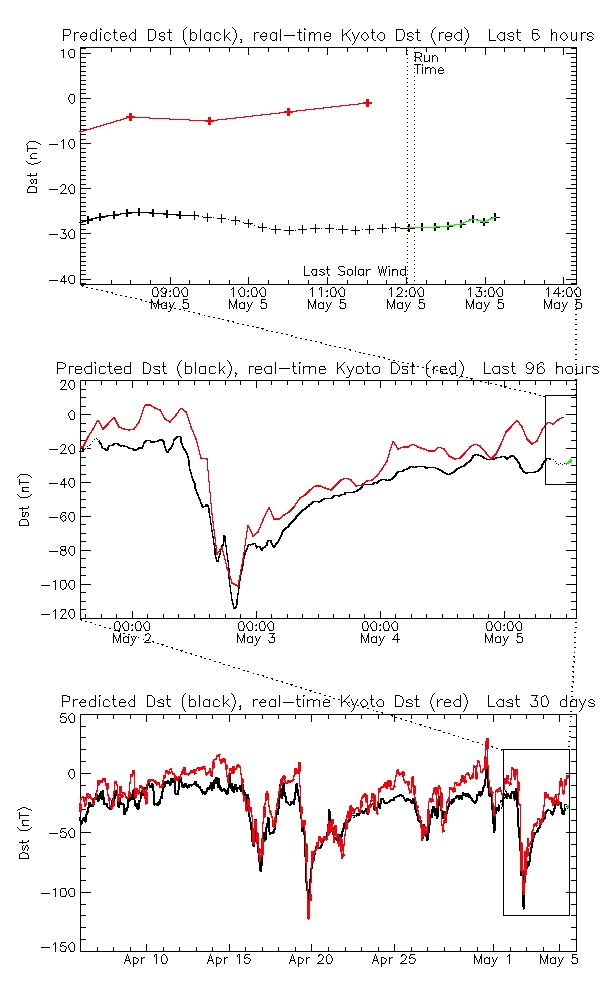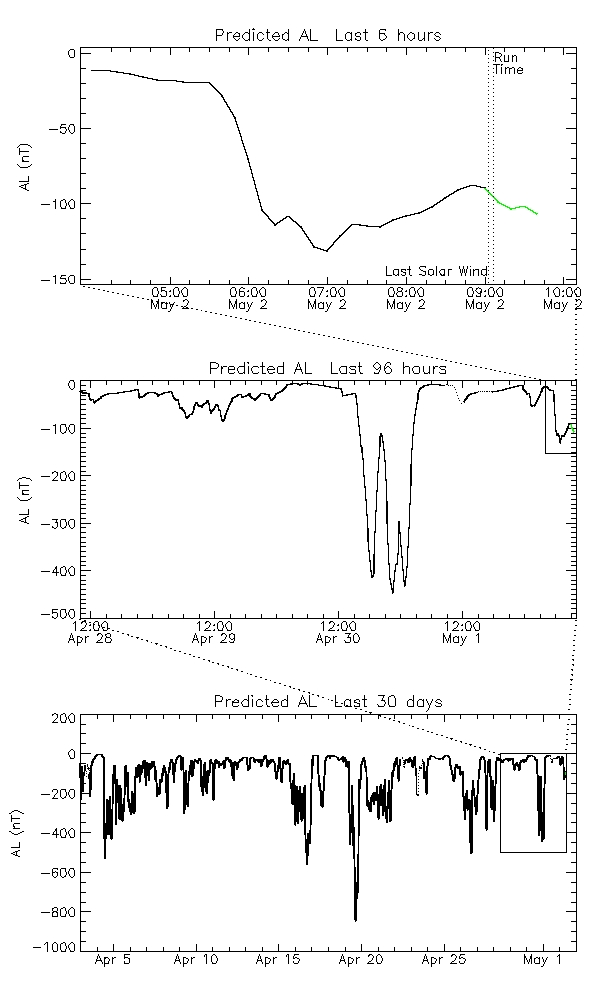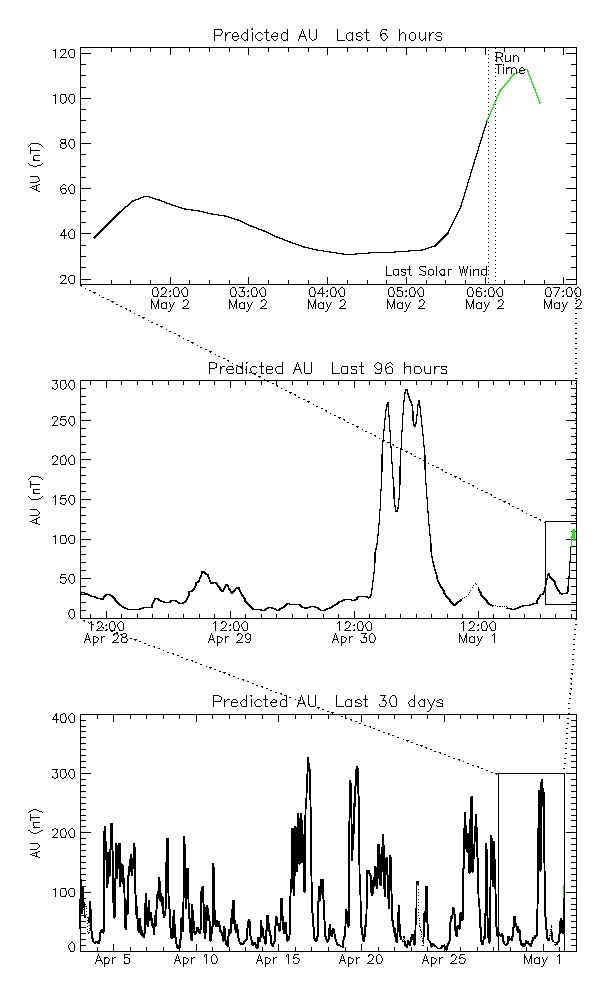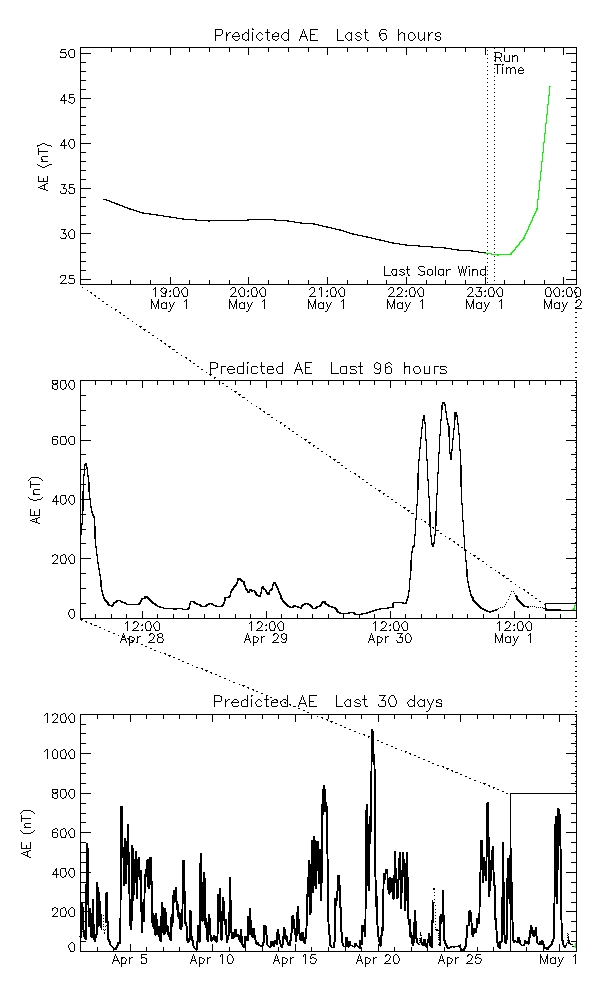



Time of model run: 2024/182-17:05:38
archive Predicted Dst ASCII data, last 96 hours Predicted AL ASCII data, last 96 hours Predicted AU ASCII data, last 96 hours Predicted AE ASCII data, last 96 hours




Time of model run: 2024/182-17:05:38
Solar wind measurements can be used to predict the Dst and AL. Both the Dst and AL predictions have a time step of 10 minutes whereas the Dst index has time step of one hour and the AL index has a time step of one minute. The Dst figures compare the real-time Kyoto Dst with our predicted Dst using real-time data from ACE or DSCOVR as the only input to the model. The model is described in A New Model for the Prediction of Dst on the Basis of the Solar Wind [Temerin and Li, 2002] and Dst model for 1995-2002 [Temerin and Li, 2006] available here.
The red line is the `near real-time' Kyoto Dst, and is subject to immediate change as new data come in and more processing is done. It is typically revised at the end of the day, again after a few months when it is replaced with the `provisional' Dst, and again after about two years when it is replaced with the `final' Dst. We believe that our predicted Dst will prove to be a more accurate representation of the `final' Dst than the `near real-time' Dst, provided the solar wind data are accurate and complete.
The current AL prediction should be regarded as the best estimate of the average value of the AL index over the next two hours [Li et al., 2007] Prediction of the AL index using solar wind parameters. The AL prediction typically under predicts the negative peaks of the AL index. However, the AL prediction's average value over two hours is in good agreement with the average value of the AL index over the same two hours. The AL model is based on a comparison of solar wind data and the provisional AL index for 1995. An updated model for the prediction of AL, AU, and AE is described in Luo et al. [2013].
Gaps in solar wind data are indicated by a dotted line for the time the gap effects the predictions.
The forecasts run once per hour. For the 6-hour plot for Dst and AL, the run-time and last solar wind data time are marked.
ACE and DSCOVR real-time solar wind data plots are available for the last 30 days and the last 96 hours. The ACE real-time magnetometer data was sometimes quite different from ACE Level 2 data, until August 2004 when new ACE magnetic field data processing code was put into operation. DSCOVR data is used starting December 1, 2016.
Monthly plots and ASCII data sets of predicted Dst, Kyoto Dst, predicted AL and solar wind data from 1995 to the present are available in this archive. The Dst comparison is best before 2010 because we're comparing with the final Kyoto Dst and using ACE Level 2 data to run the model. Starting in January 2013 we're comparing with the provisional Dst or real-time Dst, and starting in May 2013 the model uses ACE real-time magnetometer data as inputs, so the results aren't as good. Starting December 2016, DSCOVR real-time data are used.
Solar wind measurements can also be used to predict the MeV electron radiation belt flux in the Earth's magnetosphere.
Please note: these results are preliminary and are being improved. For further information, contact Xinlin Li. Links to the Kyoto Dst index and AL index: Kyoto Dst index AL index Links to other Dst prediction websites: UC Berkeley Naval Research Laboratory Univ Texas Austin Swedish Institute of Space Physics NiCT (Japan)